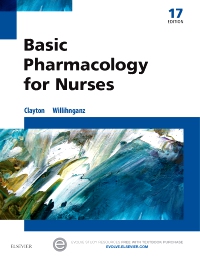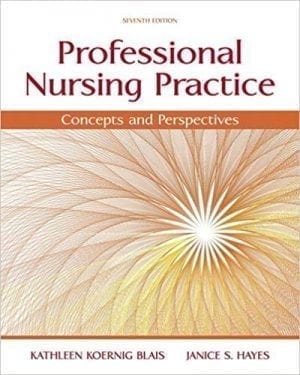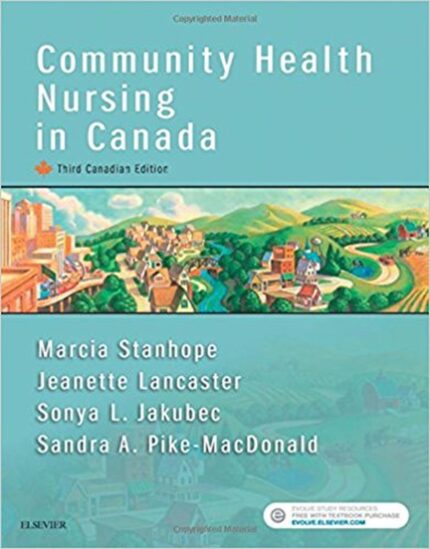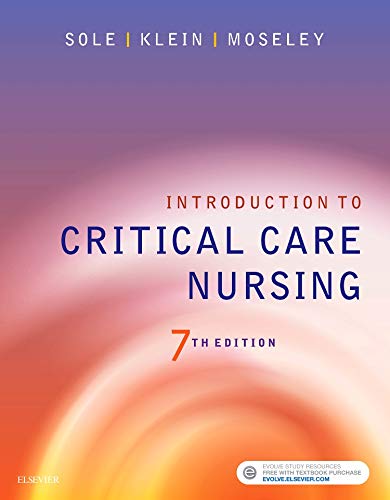Test Bank for Maternal Child Nursing Care in Canada 2nd Edition by Perry
Chapter 02: The Family and Culture
MULTIPLE CHOICE
1.A married couple lives in a single-family house with their newborn son and the husband’s daughter from a previous marriage. Which family form best describes this family?
| a. | Blended family |
| b. | Extended family |
| c. | Nuclear family |
| d. | Same-sex family |
ANS: A
Blended families are formed as the result of divorce and remarriage. Unrelated family members join together to create a new household. Members of an extended family are kin, or family members related by blood, such as grandparents, aunts, and uncles. A nuclear family is a traditional family with a male and female partner along with the children resulting from that union. A same-sex family is a family with homosexual partners who cohabit with or without children.
DIF:Cognitive Level: KnowledgeREF:p. 15
OBJ: Nursing Process: Assessment
2.In what form do families tend to be most socially vulnerable?
| a. | Blended family |
| b. | Extended family |
| c. | Nuclear family |
| d. | Lone-parent family |
ANS: D
The lone-parent family, particularly the female lone-parent family, is more likely to have a lower income and to experience poverty, which in turn can affect the health status of family members. The married-blended family, the extended family, and the nuclear family are not most socially vulnerable.
DIF: Cognitive Level: Knowledge REF: p. 16 OBJ: Nursing Process: Planning
3.What is the focus of relational nursing?
| a. | Primarily disease prevention |
| b. | Provision of health services |
| c. | Recognition of determinants of health |
| d. | Resiliency of the woman and her family |
ANS: C
Relational nursing focuses primarily on the recognition of the determinants of health. It is more congruent with health promotion than disease prevention. The focus of perinatal nursing has moved away from the provision of health service in order to focus on the determinants of health. The resiliency of the woman and her family is not the focus of relational nursing.
DIF: Cognitive Level: Knowledge REF: p. 17 OBJ: Nursing Process: Planning
4.The nurse should be aware that the criteria used to make decisions and solve problems within families are based primarily on which factor(s)?
| a. | Rituals and customs |
| b. | Values and beliefs |
| c. | Boundaries and channels |
| d. | Socialization processes |
ANS: B
Values and beliefs are the most prevalent factors in the decision-making and problem-solving techniques of families. Although culture may play a part in the decision-making process of a family, ultimately values and beliefs dictate the course of action taken by family members. Boundaries and channels affect the relationship between the family members and the health care team, not the decisions within the family. Socialization processes may help families interact with the community, but they are not the criteria used for decision making within the family.
DIF: Cognitive Level: Comprehension REF: p. 20 OBJ: Nursing Process: Planning
5.Using the family stress theory as an intervention approach for working with families experiencing parenting, the nurse can help the family change which internal context factor?
| a. | Success in coping with stressors |
| b. | Maturation of family members |
| c. | The family’s perception of the event |
| d. | The prevailing cultural beliefs of society |
ANS: C
The family stress theory is concerned with the family’s reaction to, and perception of, stressful events; internal context factors include elements that a family can control, such as psychological defences. It is not concerned with maturation of family members or with the prevailing cultural beliefs of society. The family’s success in coping with stressors is an external rather than internal context.
DIF: Cognitive Level: Comprehension REF: p. 17 OBJ: Nursing Process: Diagnosis
6.When planning interventions for diverse families, you realize that acceptance of the interventions will be most influenced by which factor?
| a. | Educational achievement |
| b. | Income level |
| c. | Subcultural group |
| d. | Individual beliefs |
ANS: D
The patient’s culture, beliefs, and values are ultimately the key to acceptance of health care interventions. However, these beliefs may be influenced by factors such as educational level, income level, and ethnic background. Educational achievement, income level, and subcultural group are all important factors. However, the nurse must understand that a woman’s concerns from her own point of view will have the most influence on her adherence to interventions.
DIF: Cognitive Level: Application REF: p. 20 OBJ: Nursing Process: Planning
7.Which would be considered when viewing the family through a phenomenological lens?
| a. | Professional relationships |
| b. | Experience of childbirth |
| c. | Cultural meanings and significance |
| d. | Health promotion within an environmental context |
ANS: B
The phenomenological lens cues the nurse to learn more about the woman’s and family members’ experiences of health and illness. Professional relationships would be considered when using the sociopolitical lens. The spiritual lens considers cultural meanings and significance. The socio-environmental perspective encourages an understanding of health and health promotion that focuses on the family in their environmental context.
DIF:Cognitive Level: ApplicationREF:p. 20
OBJ: Nursing Process: Assessment
8.Upon arriving for a follow-up postpartum and newborn home visit, the woman’s family members are present. What should the nurse do?
| a. | Observe the family members’ interactions with the newborn and with one another. |
| b. | Ask the woman to meet with her and the baby alone. |
| c. | Do a brief assessment of all family members present. |
| d. | Reschedule the visit for another time so that the mother and infant can be assessed privately. |
ANS: A
The nurse should introduce herself to the patient and the other family members present. Family members in the home may be providing care and assistance to the mother and infant. However, this care may not be based on sound health practices. Nurses should take the opportunity to dispel myths while family members are present. The responsibility of the home care maternal-child nurse is to provide care to the new postpartum mother and her infant, not to briefly assess all family members. The nurse can politely ask about the other people in the home and their relationships with the woman. Unless an indication is given that the woman would prefer privacy, the visit may continue.
DIF:Cognitive Level: ApplicationREF:p. 17
OBJ: Nursing Process: Assessment
9.Canada’s official multiculturalism policy (1971) confirmed which statement?
| a. | The rights of African-Canadian people |
| b. | The value and dignity of lesbian and gay people |
| c. | Canada’s two official languages: French and English |
| d. | Preservation of dignity among lone-parent families |
ANS: C
Canada’s official multiculturalism policy (1971) confirmed Canada’s two official languages: French and English. The rights of people identified included Indigenous people. The value and dignity of all Canadians was confirmed, with no one group singled out. There was no mention of lone-parent families in this policy.
DIF: Cognitive Level: Comprehension REF: p. 20 OBJ: Nursing Process: Planning
10.Which characteristic is reflective of cultural safety?
| a. | Maximizing respectful relationships with diverse populations |
| b. | Examining one’s own values and beliefs of various cultures |
| c. | Process and outcome to promote greater health equity |
| d. | Valuing diversity and inclusivity |
ANS: C
Cultural safety is both a process and an outcome whose goal is to promote greater health equity. Maximizing respectful relationships with diverse populations is part of cultural competence. Examining one’s own values and beliefs is related to personal reflections and is not part of cultural safety. Diversity and inclusivity are values that underpin cultural competence.
DIF:Cognitive Level: ComprehensionREF:p. 21
OBJ: Nursing Process: Assessment
11.Why is the patient’s family important to the maternity perinatal and pediatric nurse?
| a. | They provide financial support for the mother. |
| b. | The nurse will know which family member makes the decisions. |
| c. | They will provide care for the new mother when the nurse is unable to make a home visit. |
| d. | The family culture will influence nursing care decisions. |
ANS: D
Family culture influences a family’s feelings and attitudes toward health, their children, and health care delivery systems and is thus important to the nurse. Providing financial support for the mother is not related to why the family is important to the nurse. The nurse will not necessarily know which family member(s) makes the decisions. Family care is not a substitute for a nursing home visit.
DIF: Cognitive Level: Comprehension REF: p. 22 OBJ: Nursing Process: Planning
12.Which type of family is reflected when a mother’s household consists of her husband, his mother, and another child?
| a. | Extended |
| b. | Lone-parent |
| c. | Married-blended |
| d. | Trinuclear |
ANS: A
An extended family or multigenerational family includes blood relatives living with the nuclear family. Both parents and a grandparent are living in this extended family. Married-blended refers to families reconstructed after divorce. A lone-parent family only includes one parent. Both parents and a grandparent make up an extended family.
DIF:Cognitive Level: ApplicationREF:p. 15
OBJ: Nursing Process: Assessment
13.Which type of family represents a traditional family structure in which male and female partners and their children live as an independent unit?
| a. | Extended family |
| b. | Binuclear family |
| c. | Nuclear family |
| d. | Blended family |
ANS: C
In contemporary society, the traditional nuclear-family structure actually represents a relatively small number of families. Extended families have additional blood relatives other than the parents. A binuclear family involves two households. A blended family is reconstructed after divorce and involves the merger of two families.
DIF:Cognitive Level: KnowledgeREF:p. 15
OBJ: Nursing Process: Assessment
14.Which statement about family systems theory is inaccurate?
| a. | A family system is part of a larger suprasystem. |
| b. | A family as a whole is equal to the sum of the individual members. |
| c. | A change in one family member affects all family members. |
| d. | Family members’ behaviours are understood from a view of circular causality. |
ANS: B
A family as a whole is greater than the sum of its parts. A family system is a part of a larger suprasystem. A change in one family member affects all family members. Family members’ behaviours are best understood from a view of circular rather than linear causality.
DIF:Cognitive Level: ComprehensionREF:p. 17
OBJ: Nursing Process: Assessment
15.Which is a pictorial tool that can assist the nurse in assessing aspects of family life over generations?
| a. | Genogram |
| b. | Family values construct |
| c. | Ecomap |
| d. | Human development wheel |
ANS: A
A genogram depicts the relationships of family members over generations. Family values construct does not depict the relationship of family members over generations. An ecomap depicts family social relationships. The human development wheel does not depict the relationship of family members over generations.
DIF:Cognitive Level: KnowledgeREF:p. 17
OBJ: Nursing Process: Assessment
16.Which term describes the process by which people retain some of their own culture while adopting the practices of the dominant society?
| a. | Acculturation |
| b. | Assimilation |
| c. | Ethnocentrism |
| d. | Cultural relativism |
ANS: A













